When prescribed to treat pain, prescription painkillers can offer sufferers the relief they need in order to live productive lives. Several of these medications, however, are habit-forming and can quickly lead to an addiction that is quite difficult to overcome without the help of knowledgeable professionals.
Understanding Prescription Painkillers
Learn about painkillers and substance abuse
Among the most commonly abused prescription painkillers are those that include oxycodone and hydrocodone as the active ingredients. When these medications are used beyond a doctor’s recommendations or for recreational purposes, the costs to a person’s physical and mental health can be great. Allowing an addiction to prescription painkillers to remain present in one’s life can render several harmful effects that include damage to vital organs and a heightened risk for overdose, both of which could be fatal. Additionally, if an individual is battling a mental health condition at the same time, an addiction to painkillers can cause any existing symptoms to worsen.
Fortunately, these effects can be prevented by seeking out substance abuse treatment. In making the brave choice to engage in a treatment program for an addiction to painkillers, a person grappling with this form of chemical dependency can learn how to live a healthy and recovered life.
Statistics
Prescription painkiller addiction statistics
Research shows that nearly 3 million people in the United States have abused prescription painkillers at least once in the past year. Additionally, some research suggests that those who abuse these highly-addictive medications are nineteen times more likely to abuse heroin at some point. Lastly, reports show that the number of people who have died as a result of prescription painkiller abuse has tripled in the last two decades and that this rate is higher than reported deaths that involve the abuse of heroin and cocaine.
Causes and Risk Factors
Causes and risk factors for painkiller addiction
In order to understand why and how a person comes to abuse prescription painkillers, one has to consider the influences from one’s genes and environmental factors that can lead to a chemical dependency concern of this kind. Consider the following elaborations on these two influences, as well as some additional risk factors, that can make a person more vulnerable to abusing prescription painkillers:
Genetic: Researchers believe that genetics play a pivotal role in determining whether or not an individual will come to abuse substances, such as prescription painkillers. This belief is rooted in research that has found certain genes that make a person more susceptible to developing a substance abuse problem. Additionally, this conclusion has been made after family studies revealed that addiction can be found among individuals who share similar genes.
Environmental: Many addiction specialists agree that early exposure to substance abuse can increase a person’s chances for also abusing drugs at some point in life. This concept is applicable to those who have been exposed to prescription drug abuse, as some individuals who abuse these substances also have previously witnessed others consume painkillers for non-medical reasons early in their lives. Furthermore, if an individual suffers from an injury, chronic pain condition, or is prescribed painkillers after a medical procedure, there is a high likelihood for abuse if that person is not properly monitored by his or her doctor. Lastly, those with poor coping skills and a lack of support from others may also begin to abuse painkillers as a way to cope with turmoil that seems overwhelming.
Risk Factors:
- Ease of access to prescription painkillers
- Family or personal history of addiction
- Preexisting mental health disorder
- Undiagnosed mental health disorder
- Peer pressure
- Having a medical condition(s) or injury that causes chronic pain
Signs and Symptoms
Signs and symptoms of painkiller addiction
There are several behavioral, physical, cognitive, and psychosocial signs and symptoms that suggest a person is abusing prescription painkillers. If you are concerned that you or a loved one is battling a chemical dependency concern of this kind, it would be helpful to note the presence of the following and consider seeking treatment:
Behavioral symptoms:
- Decreased impulse control
- Social isolation
- Lying / omitting
- Poor occupational performance
- Declined participation in activities that were once enjoyed
- Lack of control over painkiller use
- Changes in energy levels
- Increase in painkiller use
- Increase in effort to seek out painkillers
- Possessing multiple prescriptions for painkillers
- Frequent “doctor shopping”
Physical symptoms:
- Seizures
- Cardiovascular problems
- Constipation
- Nausea
- Vomiting
- Drowsiness
- Appetite loss
- Changes in sleeping patterns
- Itchy and/or flushed skin
- Difficulty breathing
- Development of physical tolerance for larger quantities of a given prescription painkiller medication
- Withdrawal symptoms when substances are no longer present in the body
- Constricted pupils
Cognitive symptoms:
- Problems with memory
- Lack of good-decision making capabilities
- Euphoria
- Disorientation
- Confusion
Psychosocial symptoms:
- Extreme shifts in mood
- Depressed feelings
- Increased anxiety
- Irritability
- Agitation
Co-Occurring Disorders
Painkiller addiction and co-occurring disorders
Many individuals who abuse or are addicted to substances suffer from additional mental health concerns at the same time. Those who abuse or are addicted to prescription painkillers are not an exception to this norm and are often battling one or more of the following mental health conditions:
- Anxiety disorders
- Posttraumatic stress disorder
- Bipolar disorder
- Schizophrenia
- Another substance use disorder
- Depressive disorders
Effects
Effects of prescription painkiller addiction
The resulting effects that can occur when an individual abuses prescription painkillers can be far-reaching and lead to disastrous outcomes. Failing to seek treatment for a chemical dependency concern of this kind could lead to the following:
- Divorce
- Social isolation
- Inability to abstain from continued use of prescription painkillers
- Unemployment
- Homelessness
- Increased health risks
- Seizures
- Self-injury
- Suicidal thoughts
- Interaction with the legal system
- Financial strife
- Decrease in quantity and quality of interpersonal relationships
- Overdose
- Death
Withdrawl & Overdose
Effects of painkiller withdrawal and overdose
Effects of prescription painkiller withdrawal: After an individual abuses prescription painkillers for an extended period of time, it is likely that that person will experience symptoms of withdrawal when no longer consuming these substances. The onset of withdrawal symptoms can vary from person-to-person and the severity of said symptoms can be more or less severe as well. The following are the effects that are known to occur when a person is going through withdrawal after abusing prescription painkillers:
- Muscle pain
- Bone pain
- Insomnia
- Intense cravings for more prescription painkillers
- Cold flashes
- Restlessness
- Irritability
- Dilated pupils
- Nausea
- Vomiting
- Diarrhea
- Involuntary leg movements
- Decrease in appetite
- Excessive perspiration
- Tremors
Effects of prescription painkiller overdose: Because long-term abuse of prescription painkillers can result in the development of tolerance for a given medication, the risk for overdose increases exponentially. Overdose occurs when a person consumes more of a substance than his or her body can safely metabolize and the resulting effects are the body’s response to the presence of high quantities of said substance. With death being the most serious potential outcome, the following are known to occur when a person is experiencing a prescription painkiller overdose:
- Becoming unresponsive
- Lapsing into a coma
- Disorientation
- Excessive drowsiness
- Hallucinations
- Tremors
- Labored or shallow breathing
- Constricted pupils
- Vital organ damage



